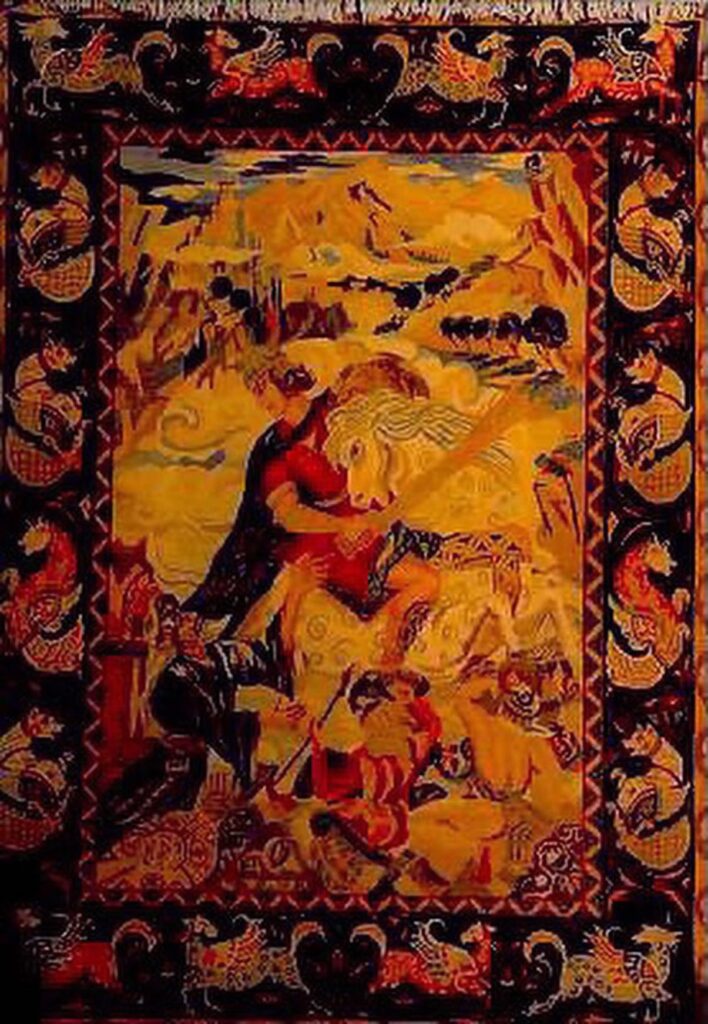The Greek historian Plutarch testified that the first known Armenian Ancient Theatre was built during the reign of Tigranes II The Great, King of Armenia, who opened the first public theatre in Tigranakert. King Artavasdes II of Armenia was considered the first Armenian playwright who built the second theatre and staged performances there.
King Artavasdes II of Armenia and King Orodes II of the Parthian Empire celebrated their victory over the Roman general Crassus at the Battle of Carrhae in the royal palace of Artashat. In the palace, the performance of the Euripides play, The Bacchae, according to Plutarch, was presented there.
The comedies of Menander and the tragedies of Euripides were regularly produced in Armenia.

During archaeological excavations at the Kaitun Belt fortress in Lori, numerous statues of actors and masks of animals and birds were discovered, corroborating the historical explanation.
While the formal Armenian theatre performed in Greek, the folk theatre of the Goussans continued to perform plays in the traditional native Armenian language.
The Great Armenian historian Movses Khorenatsi (5th century A.D.) said that dance in Armenia was integral to the expression and merit of Armenian epic poems.
The ceremonial performances of the Armenian epos were made by katakergag Goussans (Comedian Troubadours) through dance movements and mimicry, in which the meaning of the plot was expressed without dialogue.
The Comedian Troubadours were the first pantomime performers and players of the Armenian folk stages.
The Armenian theatre of the Armenian Kingdom of Cilicia was considered one of the most important centres of Armenian culture in the 12th to 15th centuries.
Among the significant antecedents of professional theatre were folk theatre performances of all kinds. In particular, the original gusan theatre, which developed in genres such as tragedy, comedy, and clowning, gained great popularity.
In the 18th century, original plays in classical Armenian and translations of European plays were published. They attracted a secular audience. The pioneer efforts of the Mekhitarists represented an essential step in the development of Western Armenian theatre.
You can follow Lianna Agasyan on X.
READ MORE: Newton’s manuscripts were written in Greek!


